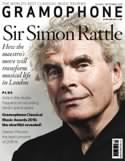Texte paru dans: / Appeared in: |
|
|
Outil de traduction (Très approximatif) |
|
|
Reviewer: Jed Distler
Pianist Claire Huangci has devised an ingenious programme concept for her second solo CD release, a two-disc Scarlatti collection. She divides disc 1’s sonatas into three groups and constructs each group into a plausible Baroque suite. The sonatas within each group not only share a common tonal centre but also correspond, more or less, to the mood and character of typical suite movements (preludes, allemandes, sarabandes, gigues and so on). Similarly, she models disc 2’s groupings after classical sonatas in regard to tonal relationships and the typical fast-slow-fast three-movement paradigm (trs 13-16 add up to a convincing four movement entity). I’m not sure where the final C major Sonata, Kk513, fits into Huangci’s scheme of things, yet the music can certainly stand by itself by virtue of its pastoral demeanour and intrinsic tempo changes. One particularly effective juxtaposition occurs in disc two’s first hybrid ‘sonata’, where the main theme of Kk206 in E major, in steady rhythm, dovetails into the opening three notes of Kk322 in A major without blinking an eye. Huangci’s ordering also illuminates elements in Scarlatti’s music that point to the future, such as the lovely right-hand cantilena of Kk208 in A major, which one could plug into a Mozart sonata without anyone being the wiser.
In order for Huangci to maintain balance and proportion within her superimposed larger forms, she understandably omits repeats, which avid Scarlatti connoisseurs might miss. Yet when you consider her instinctive musicality, unflappable technical command and sensitive ear for nuance, repeats hardly matter. Listen to the astonishing fluidity and centredness of her rapid scales in Kk124, the hypnotic aura she creates and sustains within Kk125’s unusually slow tempo, the insightfully contoured canonic lines of Kk76 in G minor or Kk397’s alluringly blended detached and legato articulations; this is Scarlatti artistry of the highest order.
Granted, one might prefer aspects of other performances to Huangci’s, but she more than holds her own in the company of celebrated Scarlatti luminaries; her disarming way with Kk284 in G major, for example, equals Pletnev for character. It’s gratifying to have followed Huangci’s progression from a 16-year-old prodigy to a 25-year-old artist poised for greatness.
|
|
|
|
|
|
Cliquez l'un ou l'autre
bouton pour découvrir bien d'autres critiques de CD |
|

/0885470006031.jpg)


